Superorganism potential
The term superorganism can be used to refer to a colony of honey bees. The term gained prominence in the mid/late noughties having been reintroduced by the world-renowned myrmecologist {{1}} E.O. Wilson.
Bees, like ants (myrmex, “ant”, from the Greek ??????), are social insects in which there are divisions of labour. Different individuals within the colony perform different tasks. Some of these roles are defined by the castes in the colony – queen, worker and drone in a colony of honey bees for example – and some are defined by physiological differences between individual members of the same caste.
The term superorganism describes the entirety of the colony and is defined as a group or association of organisms which behaves in some respect like a single organism.
Essentially, a superorganism has characteristics and behaviours that the individuals within the colony – due to caste or physiological specialisation – do not exhibit.
The superorganism operates as a unified entity, collectively working together to maintain and reproduce the colony.
Division of labour and temporal polyethism
Drones and queens have relatively straightforward roles in the colony. Drones, like teenage boys, lounge around eating and thinking about sex. The queens are egg-laying machines.
Although there’s undoubtedly work involved in laying your bodyweight in eggs at the height of the season, the real work in the colony is – appropriately – done by the workers.
Worker bees exhibit temporal polyethism i.e. they display different patterns of behaviour depending upon their age. They have a maturational schedule in which they sequentially undertake age-correlated roles in the colony:
- Young bees work in the hive in a series of roles starting with cell cleaning (days 1-2), nursing developing larvae (nurse bees; days 3-11) and wax production (days 12-17).
- After two to three weeks the workers undergo significant physiological changes (weight loss, changes in immune function, reduced stress resistance) which prepare them for a productive life outside the hive. During this period the bees transition through a period when they act as guard bees.
- Older bees (the ‘flying’ bees) perform a range of foraging activities including water carrying, pollen collection and nectar gathering.
And then they die in the field ?
Behavioural plasticity
This behavioural maturation is controlled by a so-called negative feedback loop between vitellogenin (Vg {{2}}) and juvenile hormone (JH).
Nurse bees have high Vg levels which are reduced at the transition to foraging. Conversely JH levels increase with the onset of foraging (I know this sounds counterintuitive). These changes are responsible for a range of physiological changes in the worker bee.
But it’s not as simple as that. High Vg levels can block JH synthesis, so delaying maturation and foraging. Similarly, JH may reciprocally inhibit Vg synthesis and induce early foraging.
Clearly that last couple of sentences indicates that worker maturation is not an invariant process. It doesn’t always occur after 2-3 weeks.
In fact, the maturation or ageing process in honey bees is a very interesting phenomenon.
Ageing exhibits seasonal variability and remarkable plasticity.
Nurse bees can survive for at least 130 days and overwintering bees may survive up to 280 days. Clearly ageing in bees is a remarkably variable process. Overwintering bees ‘mature’ into either nurse bees or foragers. Presumably this has evolved as an effective mechanism of allowing spring colony build up (by having sufficient bees for the different roles) once environmental conditions improve.
In addition, there is another striking feature of the maturation process of honey bees.
Under certain social environmental conditions maturation is reversible.
This reversible maturation can be demonstrated by removing the nurse bees from the hive. Under these conditions some of the younger foragers revert, both behaviourally and physiologically, to nursing tasks. JH levels drop and Vg levels increase.
Old foragers are unable to undergo this rejuvenation.
Which finally and in a round the houses way gets me to the subject I meant to cover in the first place this week …
Brood and the superorganism
The honey bee colony superorganism not only contains a queen, workers and drones. It also contains brood. In the following text I’ll use the term brood as a collective noun meaning all the eggs, unsealed larvae and sealed pupae in the colony (unless otherwise specified).
Is the brood a component of the superorganism?
It certainly is.
Remember previous discussion of laying workers. These are workers that lay unfertilised eggs which develop into drones. Egg laying by workers is suppressed by pheromones produced from unsealed brood {{3}}. Therefore brood does influence the behaviour of the colony {{4}}.
If the complete colony – brood, workers, drones and a queen – is a superorganism, which components of the colony, individually or together, have the potential to form the superorganism?
And why should this matter?
Swarming and the superorganism
During swarming, either naturally during colony reproduction, or during manipulation by the beekeeper, the ‘superorganism’ is broken up.
During natural swarming the (old) mated queen leaves the colony with 60-75% of the workers to establish a new colony. By the time the swarm leaves, the original colony – which has all the eggs, larvae and brood (obviously) – is usually already well on the way to rearing a new queen. The (new) virgin queen emerges, gets mated, and the colony has successfully reproduced.
Many of the colony manipulation methods that are used to prevent the loss of natural swarms exploit the potential of the components in the colony to form a complete new colony.
Most ‘artificial swarms’ work by breaking the colony – the superorganism – into two parts:
- The queen and the ‘flying’ bees. Even young bees can fly, so the term ‘flying’ bees refers to the older bees from the colony that have matured sufficiently to leave the hive.
- The nurse bees and all the brood.
These two parts both have the potential to create a new colony.
The queen and the flying bees that form the swarm (or the queenright part of an artificial swarm) occupy a new site (or hive {{5}}), draw comb in which the queen lays, the larvae are fed {{6}}, pupate and emerge. At the same time, foragers collect the necessary nectar and pollen to maintain the new colony.
The swarmed colony (i.e. the queenless part of an artificial swarm) contains ample stores and the nurse bees. What they don’t have is a queen. But they do have eggs and young larvae. The nurse bees select and feed one or more of these young larvae with copious amounts of Royal Jelly. A few days later a virgin queen emerges, matures, mates and returns to the colony to start laying eggs.
Therefore both natural and artificial swarms exploit the potential in both parts of the original colony to eventually reproduce the colony.
No potential
Not all components of the colony have the potential to give rise to a new colony or superorganism. A solitary queen doesn’t even have the ability to feed herself properly, let alone double up for egg laying and nursing larvae duties.
This comes as a surprise to some people. If you frequent any of the online discussion forums you’ll sometime see questions posted like this:
What sort of hive do I need to buy to put a queen bee in to make honey?
Followed by some polite, or not so polite, responses saying that there’s a little bit more to beekeeping than that {{7}}.
The ‘flying’ bees alone, in the absence of a queen, also have no potential. They can lay eggs (as laying workers, see above), but since the eggs are unfertilised the colony will be doomed. It’s not unusual for a queen from an artificial swarm (or from a cast) to fail to return from a mating flight, so condemning the workers in the hive to oblivion.
Swarms and behavioural plasticity
The classic artificial swarm involves moving the nurse bees and the brood to a new site, leaving the queen and the flying bees in the original location.
You do this so that the flying bees that have orientated to the position of the original hive – whether out in the field actively foraging or in the moved hive – eventually return and so become separated from the nurse bees and the brood.
In doing this you remove the urge to swarm and you weaken the queenless hive.
The majority of those flying bees are foragers.
And this is where behavioural plasticity is essential. remember that the artificial swarm predominantly contains foragers, not the nurse bees needed to feed developing larvae.
Some of these foragers undergo rejuvenation to produce wax or to become nurse bees. These build new comb and, in a few days, feed larvae that have hatched from the eggs laid by the queen.
This behavioural plasticity contributes to the potential of the artificial swarm to produce a new colony or superorganism.
Do the same processes happen in natural swarms?
That requires a discussion of the worker composition of swarms which is not straightforward and will have to wait for another day ?
{{1}}: I couldn’t resist that one as it was new to me … someone who studies the biology of ants.
{{2}}: We’ve met vitellogenin before in discussions of the diet of the Varroa mite.
{{3}}: This is termed brood pheromone and consists of a ten-component blend of fatty-acid esters which has multiple roles. It suppresses ovary development in workers, modulates caste ratios and influences foraging ontogeny, depending upon its concentration. To confuse matters further, its composition varies depending upon the age of the developing larva.
{{4}}: One way to ‘cure’ laying workers is to repeatedly add frames of unsealed brood to a colony. There are better ways in my opinion.
{{5}}: Confusingly on the same site if you conduct a Pagdens’ artificial swarm.
{{6}}: Hang on a second … doesn’t that need nurse bees? I’ll come back to this point.
{{7}}: It’s actually not such a daft question … this is what bumble bee queens do every spring. Overwintered mated female bumble bees establish a new nest and start laying eggs and rearing young. These develop into a colony containing female workers, males and, later in the season, queens.
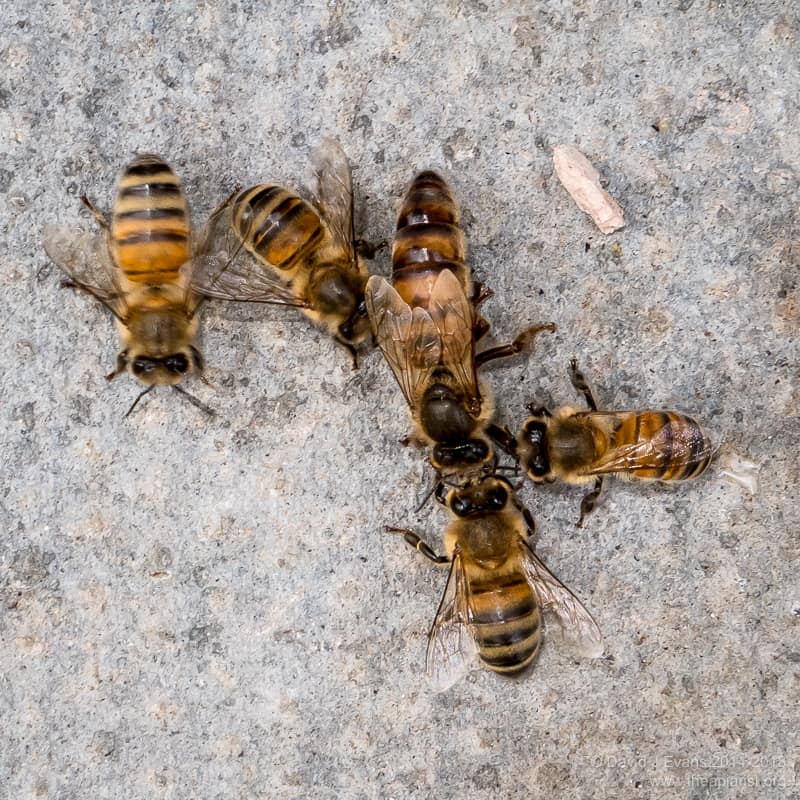
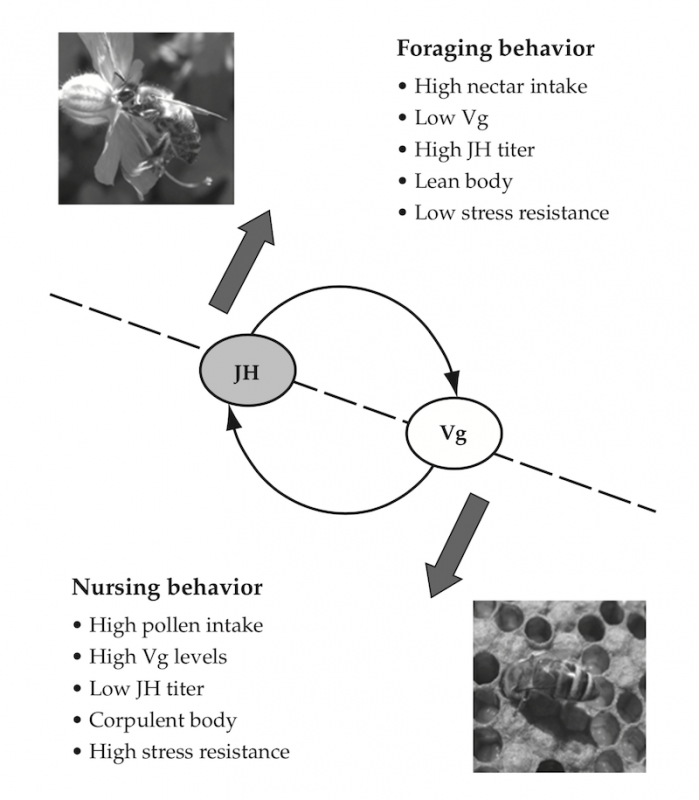
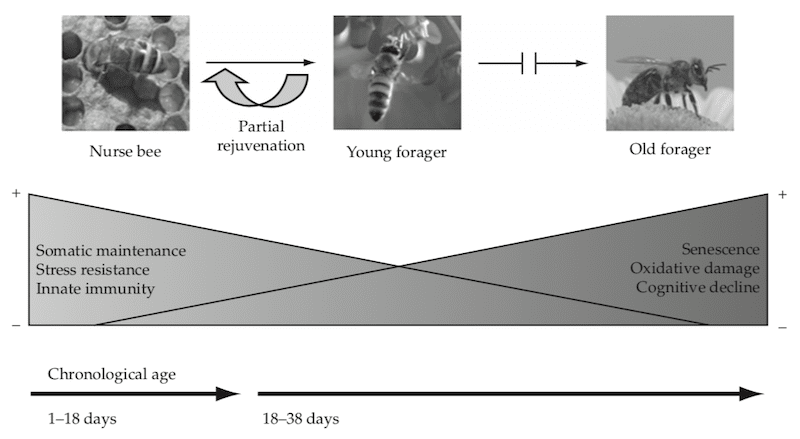
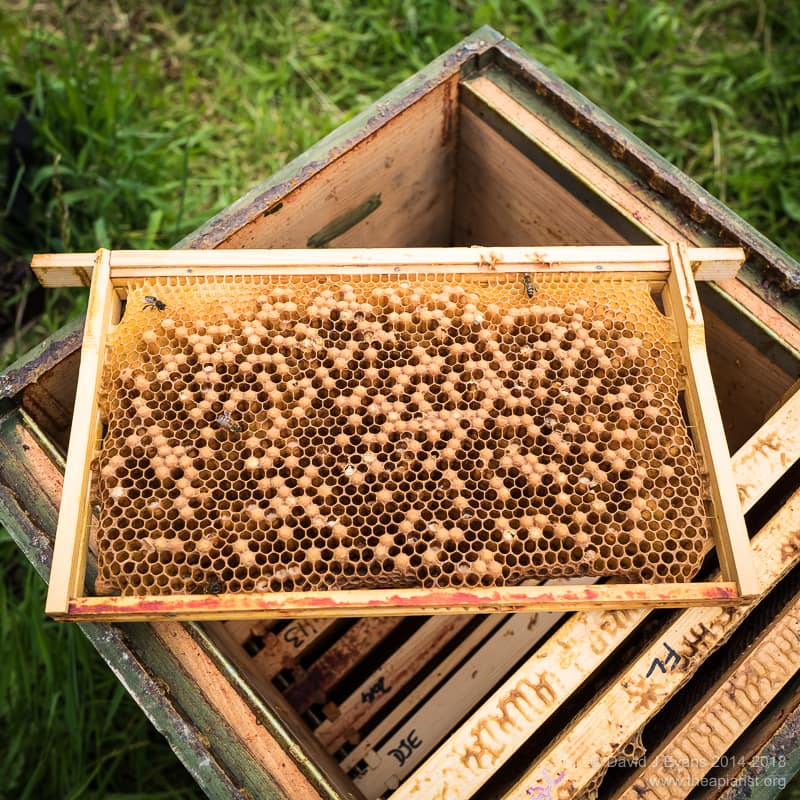
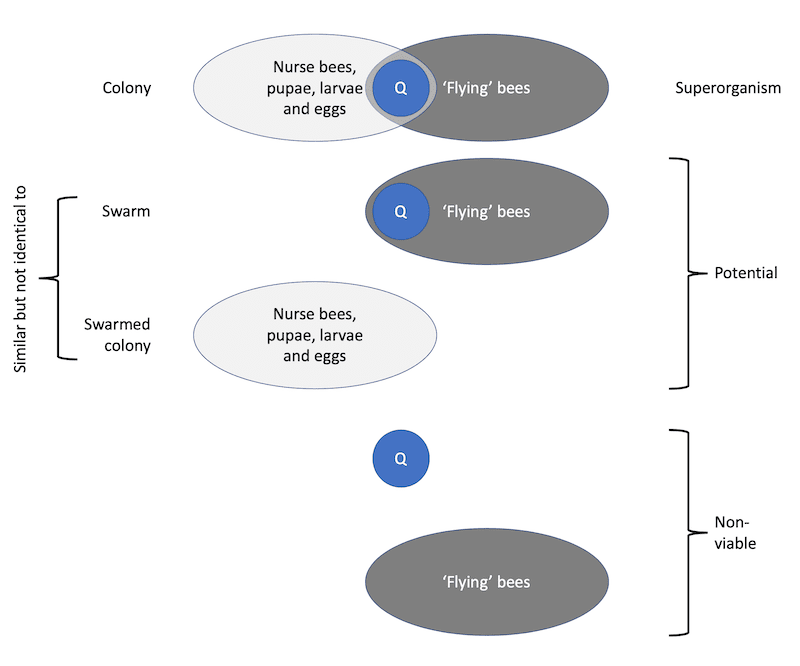
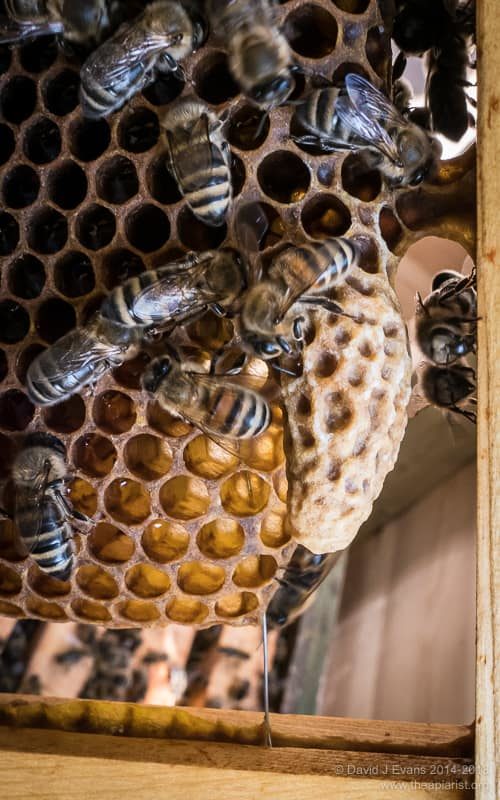
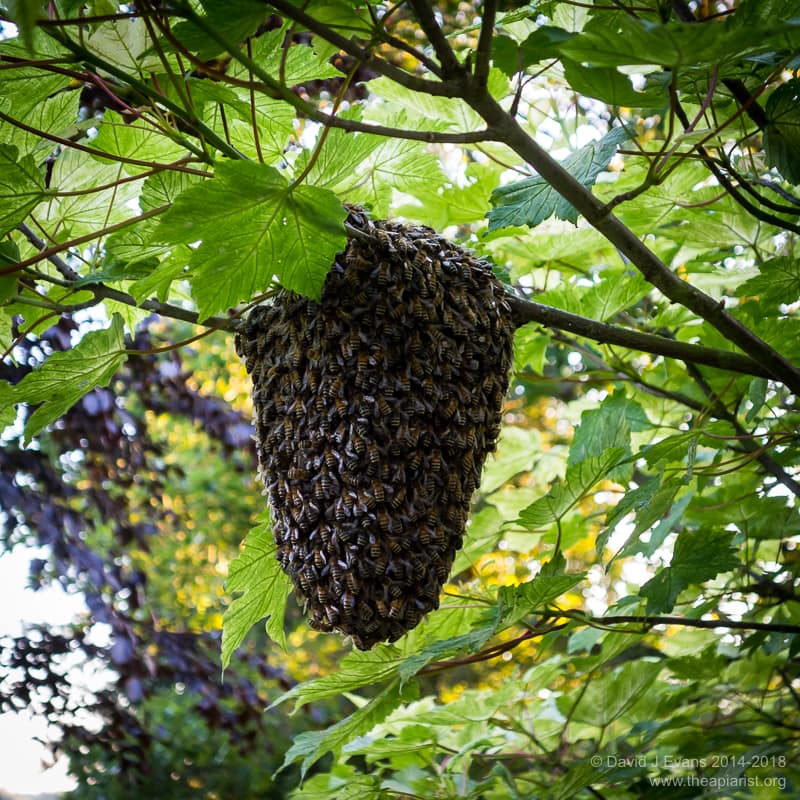
Join the discussion ...